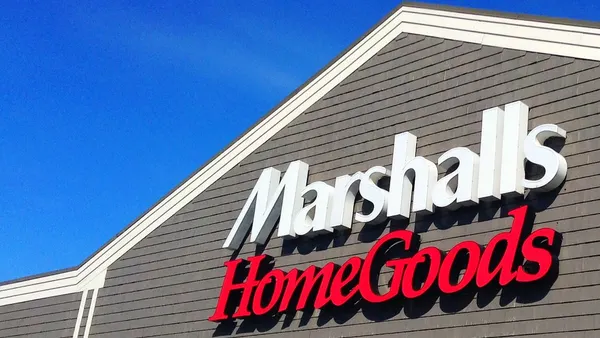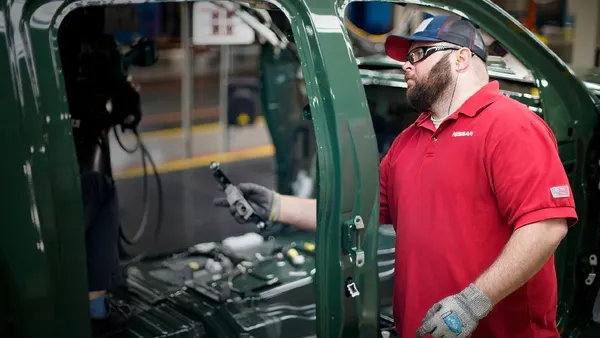Dive Brief:
- Levi Strauss is shaking up its organizational structure to focus on direct-to-consumer growth, as it "adapt[s] to a changing retail environment," the company announced in a press release.
- The company created a Product, Innovation & Supply Chain organization that "further integrates supply chain into the consumer journey." Liz O'Neill, who was formerly Levi Strauss' chief supply chain officer, will lead the division.
- The apparel brand also established a Direct-to-Consumer organization focused on omnichannel strategy and consumer relationships, which Levi Strauss did not have when it was exclusively a wholesaler.
Dive Insight:
Traditionally, the customer facing front end of the organization is run by the marketing organization with strong support from executive leadership. The supply side, or back end, is run by the operations or manufacturing function, with limited support from the C-suite. The gulf between the two is still quite apparent in many companies.
Levi Strauss is formally stitching these functional areas together into a cohesive organization that seeks to tighten the linkage between customers and suppliers. By shortening the functional distance, all will be better served.
In several companies I worked for, customers were routed through a comfortable front lobby and were met by a live receptionist, with flowers and candy on the counter and their names on a welcome sign. Suppliers were routed through the back entrance and needed to check in with security through a small hole in a bullet proof window. The disparity in organizational value was obvious and constantly reinforced.
I worked with one supplier who sold not only to my organization but to our prime customer as well. Key members of the supplier’s engineering team were invited in to meet with my company’s leadership and the customer’s engineering team to resolve an issue. The meeting was fruitful, and there were smiles, hand shakes and business card exchanges. After the meeting, the customer was taken to lunch through the front lobby by the CEO, and I escorted the supplier’s team to the back door.
This announcement from Levi Strauss is just a start. There are organizational dynamics at play from both sides. Those that work the front end need to be made aware of supply chain issues and opportunities. The supply chain team, and key suppliers, need to be brought up to speed on customer issues. Only when this new organization overcomes those traditional barriers, and begin to work more closely together, can there be any chance for success.
Many supply chain related improvements come out of the retail space. Hopefully supply chain managers in other industries can use this example to demonstrate the importance of the supply chain into daily operations.













